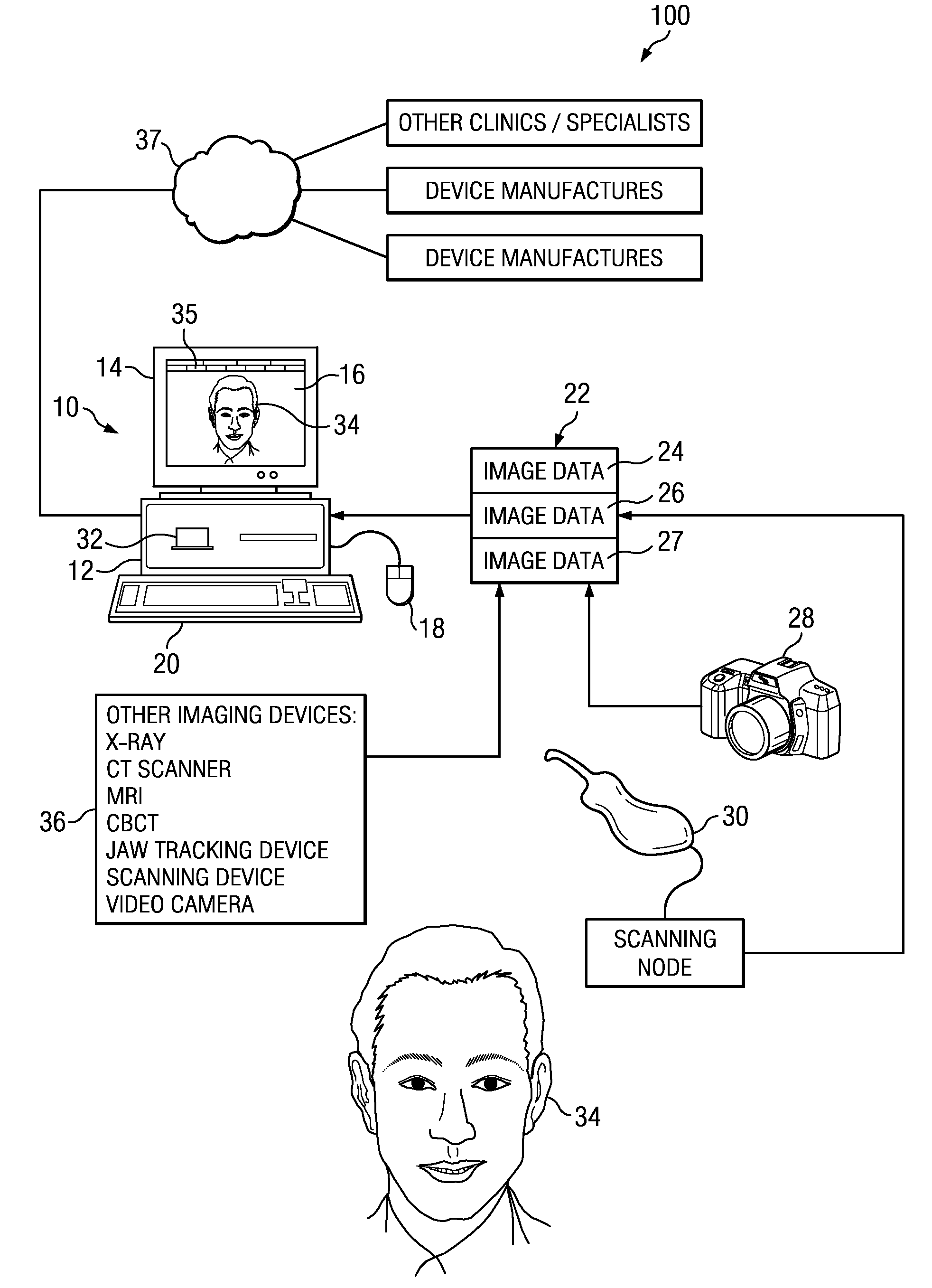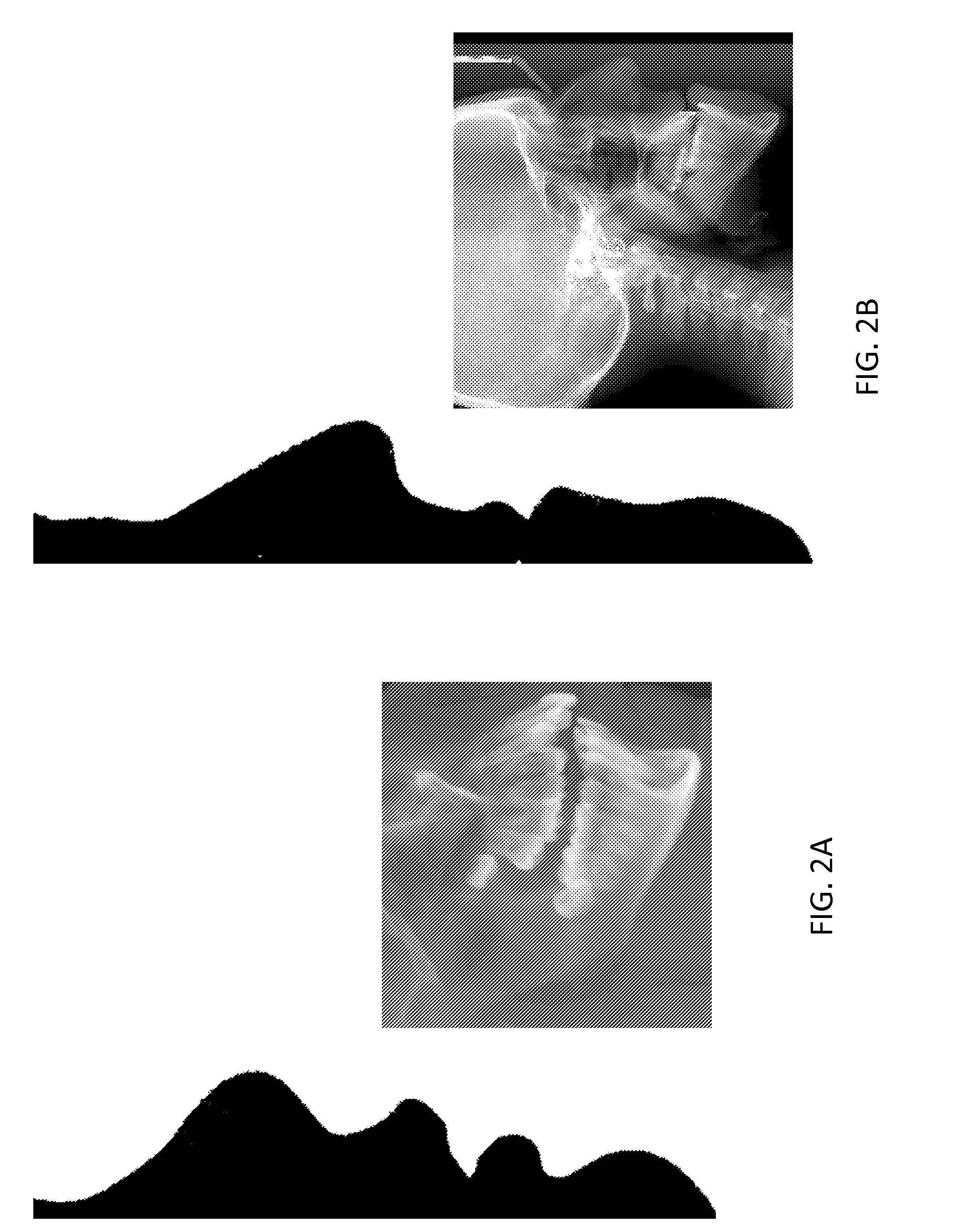Orthodontic treatment planning using biological constraints
a technology of biological constraints and orthodontic treatment, applied in the field of orthodontic treatment planning, can solve problems such as bone loss, gingival recession or root resorption, and achieve the effect of predicting and stable treatment outcomes
- Summary
- Abstract
- Description
- Claims
- Application Information
AI Technical Summary
Benefits of technology
Problems solved by technology
Method used
Image
Examples
Embodiment Construction
[0067]Orthodontic tooth movement (OTM) is a result of two interrelated events 1) bending of alveolar bone and 2) remodeling of the periodontal tissues. These events are triggered through the application of mechanical forces to the tooth. Disregard of the interaction between the applied orthodontic forces, the type of tooth movement and the anatomical constraints may lead to unfavorable sequel such as bone loss, gingival recession or root resorption. Therefore, an understanding of the nature of the interaction between these factors and their influence on the biological response is vital to ensure predictable and stable treatment outcomes.
[0068]The present invention has 3 main components: Diagnostic, Prognostic and therapeutic using visualization, simulation, and 3D images.
[0069]Diagnostic: Nature of anomaly compared against internal control as well as normative data base.
[0070]Measures include shape and size volume of maxillary and mandibular alveolar processes. Quality of bone. Thic...
PUM
 Login to View More
Login to View More Abstract
Description
Claims
Application Information
 Login to View More
Login to View More - R&D
- Intellectual Property
- Life Sciences
- Materials
- Tech Scout
- Unparalleled Data Quality
- Higher Quality Content
- 60% Fewer Hallucinations
Browse by: Latest US Patents, China's latest patents, Technical Efficacy Thesaurus, Application Domain, Technology Topic, Popular Technical Reports.
© 2025 PatSnap. All rights reserved.Legal|Privacy policy|Modern Slavery Act Transparency Statement|Sitemap|About US| Contact US: help@patsnap.com



